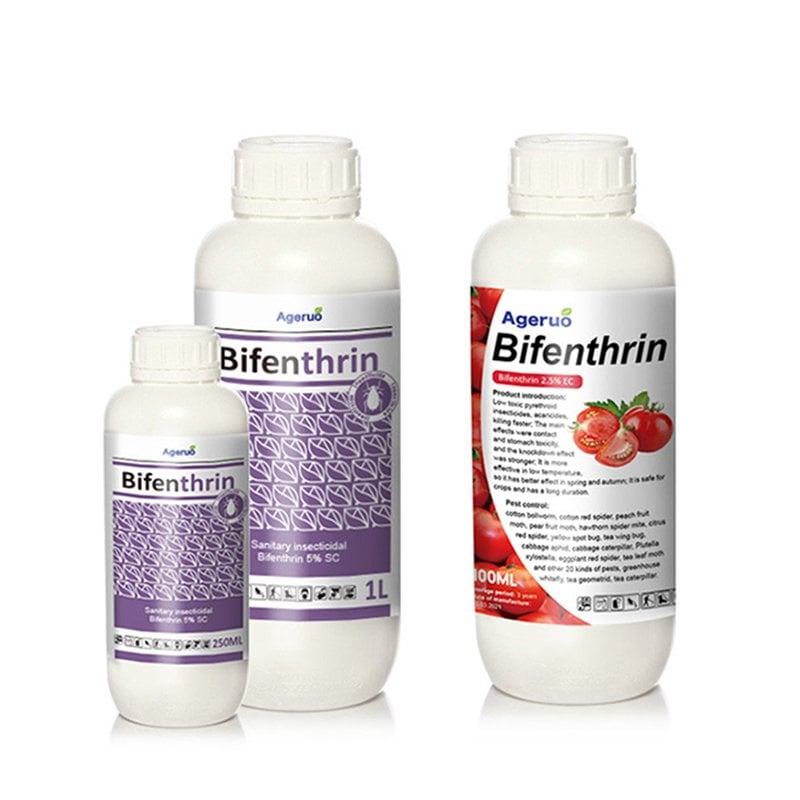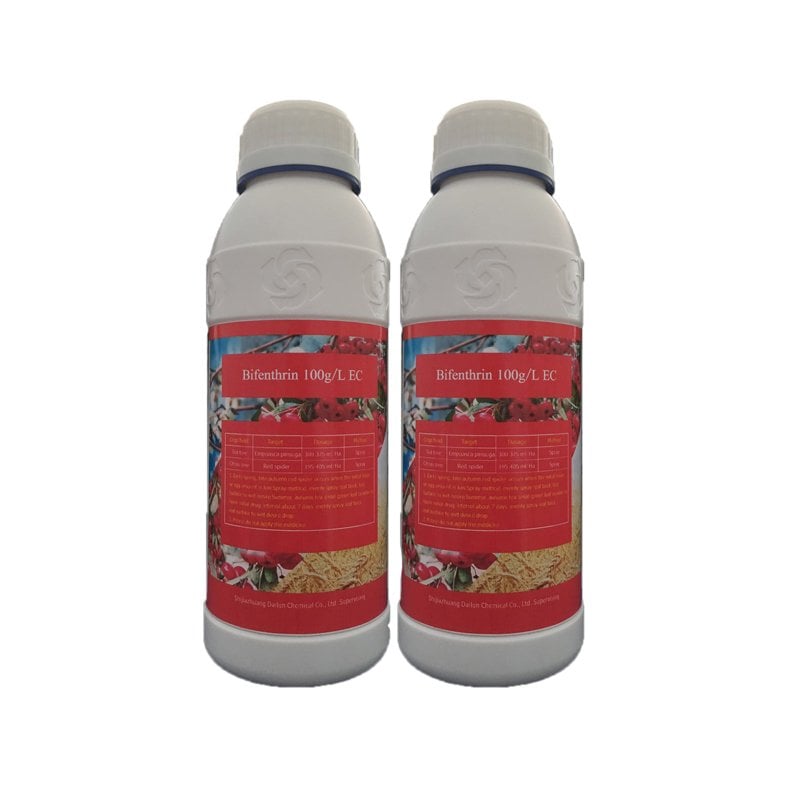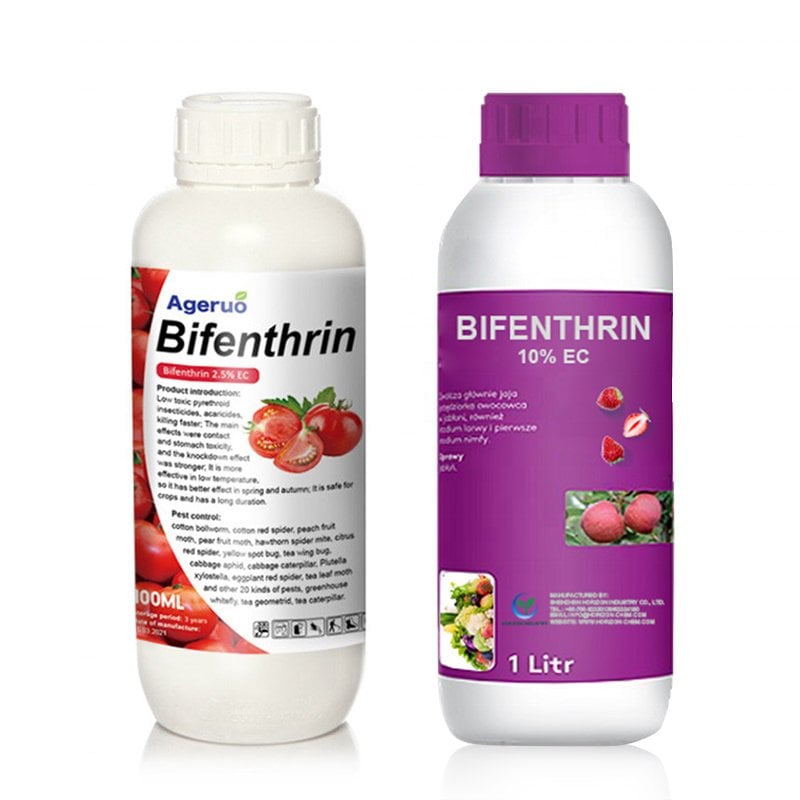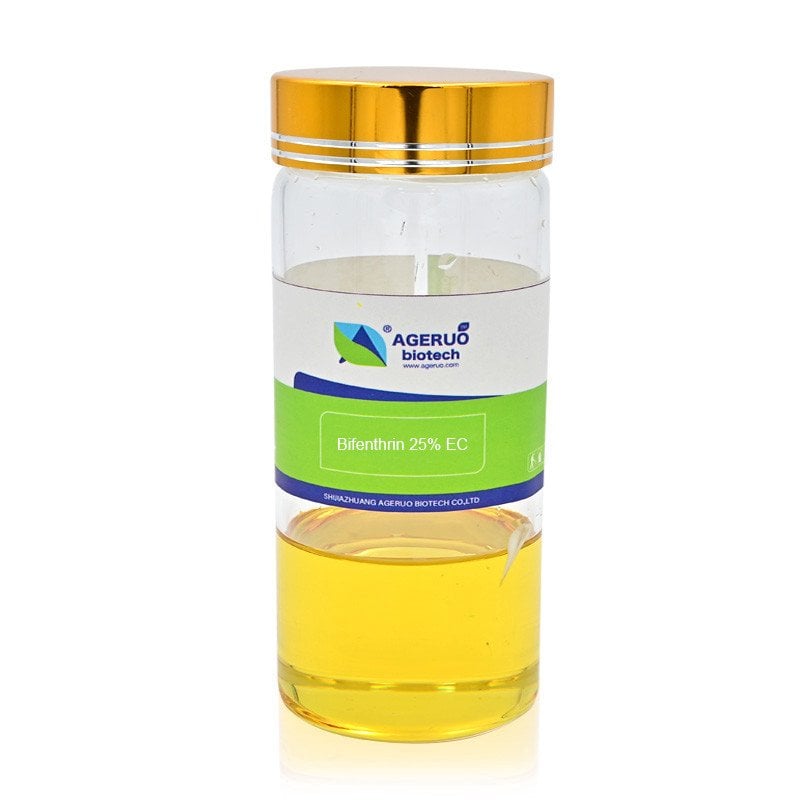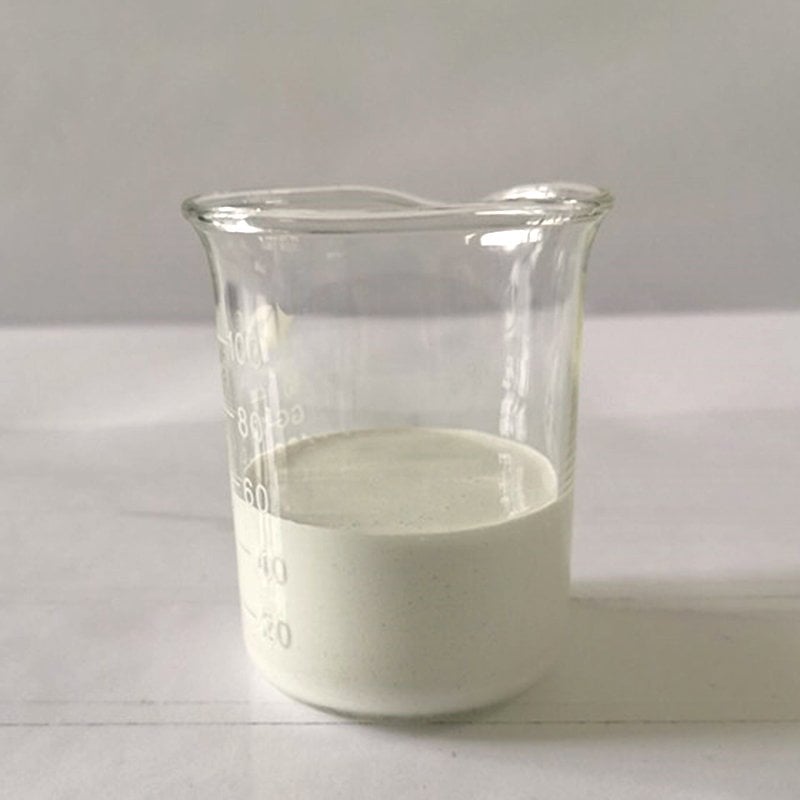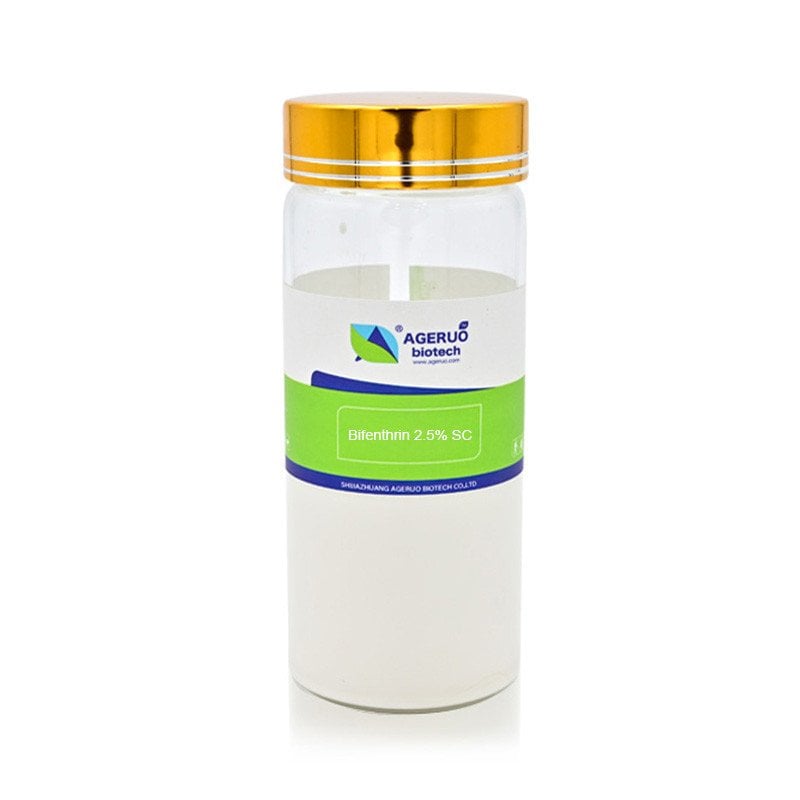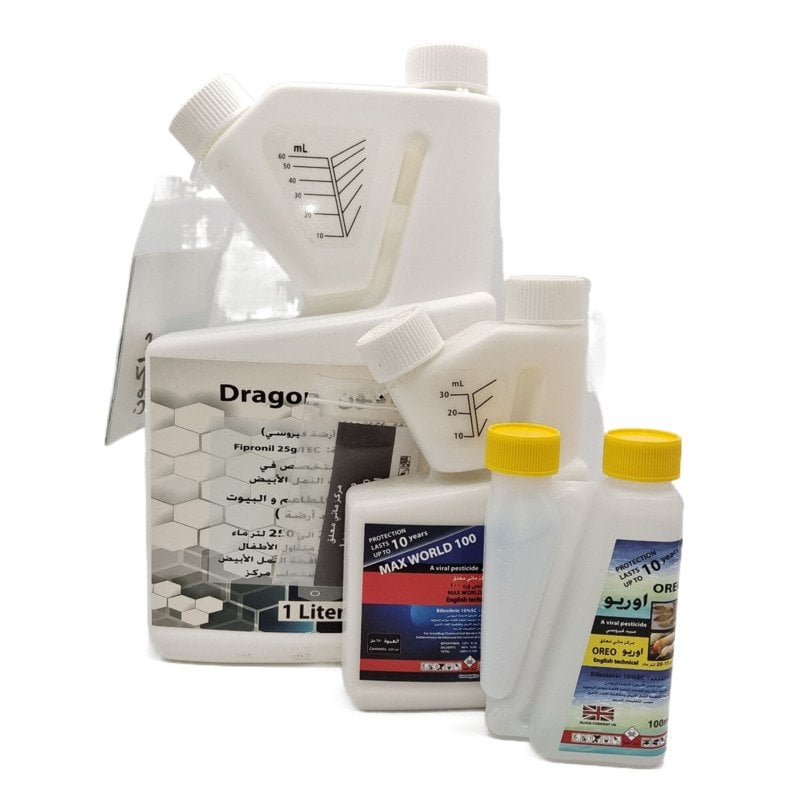How Does Bifenthrin Kill Insects?
Bifenthrin is a widely used pyrethroid insecticide commonly used to control a wide range of pests in: agricultural, residential and industrial environments. Whether you’re a farmer trying to protect your crops or a homeowner tackling a pest issue, understanding how Bifenthrin works can help you appreciate its value and ensure proper application. In this article, we will break down how Bifenthrin kills insects, its mechanism of action, its effectiveness, and why it’s an excellent choice for pest control.
What is Bifenthrin?
Bifenthrin is a synthetic pyrethroid insecticide, meaning it is chemically similar to pyrethrins, which are natural insecticides derived from the chrysanthemum flower. Pyrethroids like Bifenthrin are specifically designed to be more stable and longer-lasting than natural pyrethrins. It is used to control a variety of insects, including ants, termites, mosquitoes, cockroaches, flies, and various agricultural pests.
Mechanism of Action: How Bifenthrin Kills Insects
The way bifenthrin destroys pests is very simple. It affects the insect’s nervous system, specifically the function of its sodium channels, which are used to transmit nerve signals.
- Nerve Cell Disruption:
- Bifenthrin targets and binds to sodium channels on the nerve cells of insects. These channels help nerve signals travel through the insect’s body, allowing it to function normally.
- When Bifenthrin enters the insect’s body (either through contact or ingestion), it prevents the sodium channels from closing properly, causing continuous nerve cell stimulation.
- Paralysis and Death:
- The continuous stimulation of nerve cells causes the insect’s nervous system to go into overdrive. As a result, the insect becomes paralyzed and is unable to move or function normally.
- Without the ability to move or feed, the insect will die from paralysis, unable to escape or carry out necessary survival activities.
- Targeted Effect:
- While Bifenthrin is deadly to insects, it is far less toxic to humans and animals because their sodium channels behave differently. This makes Bifenthrin a safe option for controlling pests when used as directed.
Why is Bifenthrin Effective Against Insects?
Bifenthrin is very effective in controlling insects for the following reasons:
1. Broad-spectrum activity:
Bifenthrin fights a wide range of pests, including ants, termites, cockroaches and mosquitoes, making it versatile for residential and agricultural pest control.
Bifenthrin’s ability to target a wide range of pests makes it ideal for Integrated Pest Management (IPM) strategies, which are designed to minimize the use of chemical treatments while still achieving effective pest control.
2. Long-lasting protection:
Unlike some other insecticides, bifenthrin has a long residual effect. This means it continues to work after application, providing ongoing protection from pest infestations. It is recommended for use on crops and in areas with persistent pests.
3. Rapid knockdown:
Bifenthrin has a fast knockdown effect, which means that insects are killed shortly after coming into contact with the insecticide. Rapid kill is possible when immediate results are needed, such as in the case of cockroaches or mosquitoes, which are commonly used in home hygiene.
Applications of Bifenthrin: Where and How It’s Used
Bifenthrin is widely used for agricultural and household pest control. Here are some of its most common applications:
1. Agriculture:
Crop: Bifenthrin is used to protect crops such as soybeans, corn, cotton and vegetables from insects. Its effectiveness against a wide range of agricultural pests makes it the preferred solution for crop protection.
Pest Control: bifenthrin is commonly used for pests that severely damage crops and reduce yields, e.g., control of pests such as aphids, whiteflies and moths.
2. Residential:
Termite Control: Bifenthrin is typically used in termite control applications, including pre- and post-construction treatments. Bifenthrin is used to form a barrier around a building to prevent termites from entering and damaging the building.
Mosquito Control: bifenthrin is also used to kill mosquitoes, a common pest known to transmit a variety of viruses and diseases and are very annoying.
3. Lawn Management:
In addition to agricultural and residential pest control, bifenthrin is also used in lawn management to control pests such as grubs, fleas and ticks.
Mosquito Control: Bifenthrin is also used to kill mosquitoes, a common pest known to transmit diseases like West Nile Virus and Zika Virus.
Environmental and Safety Considerations
While Bifenthrin is highly effective in pest control, there are important safety precautions to take:
- Toxicity to Aquatic Life:
- Bifenthrin is toxic to aquatic organisms, so it is essential to follow the application guidelines and avoid using it near water sources to prevent contamination of rivers, lakes, and streams.
- Precautions for Humans and Pets:
- Bifenthrin is generally considered low toxicity to humans and pets when used as directed. However, it is still important to wear protective gear, such as gloves and masks, when applying it, especially in concentrated forms.
- Impact on Beneficial Insects:
- Just like other pyrethroids, Bifenthrin can also harm beneficial insects such as bees, so it is recommended to avoid application during pollination periods to protect these essential creatures.
Conclusion: Why Choose Bifenthrin for Pest Control?
Bifenthrin is a powerful and effective insecticide that works quickly and offers long-lasting protection against a wide variety of pests. Its ability to target pests at the nerve cell level makes it highly effective in providing quick knockdown and extended residual control. Whether you’re managing a crop or dealing with household pests, Bifenthrin offers a safe and efficient solution for pest control when used properly.
As with any pesticide, it’s important to follow the manufacturer’s recommendations to minimize risks to humans, animals, and the environment. When used responsibly, Bifenthrin can be an essential tool in integrated pest management strategies, delivering effective results and ensuring the health and productivity of crops and properties alike.
Frequently Asked Questions (FAQs)
- How does Bifenthrin kill insects?
- Bifenthrin kills insects by disrupting their nervous system, causing paralysis and death through overstimulation of their nerve cells.
- Is Bifenthrin safe for humans and pets?
- Bifenthrin is considered low toxicity to humans and pets when used according to the manufacturer’s instructions, but protective gear should always be worn during application.
- How long does Bifenthrin last after application?
- Bifenthrin provides long-lasting residual protection, often working for weeks after it is applied, depending on environmental conditions.
- What pests does Bifenthrin target?
- Bifenthrin is effective against a wide range of pests, including termites, mosquitoes, cockroaches, ants, and agricultural pests like aphids and whiteflies.
- Is Bifenthrin toxic to the environment?
- Yes, Bifenthrin is toxic to aquatic life, and care should be taken to avoid contamination of water bodies during application.
Bifenthrin is a widely used pyrethroid insecticide commonly used to control a wide range of pests in: agricultural, residential and industrial environments. Whether you’re a farmer trying to protect your crops or a homeowner tackling a pest issue, understanding how Bifenthrin works can help you appreciate its value and ensure proper application. In this article, we will break down how Bifenthrin kills insects, its mechanism of action, its effectiveness, and why it’s an excellent choice for pest control.
What is Bifenthrin?
Bifenthrin is a synthetic pyrethroid insecticide, meaning it is chemically similar to pyrethrins, which are natural insecticides derived from the chrysanthemum flower. Pyrethroids like Bifenthrin are specifically designed to be more stable and longer-lasting than natural pyrethrins. It is used to control a variety of insects, including ants, termites, mosquitoes, cockroaches, flies, and various agricultural pests.
Mechanism of Action: How Bifenthrin Kills Insects
The way bifenthrin destroys pests is very simple. It affects the insect’s nervous system, specifically the function of its sodium channels, which are used to transmit nerve signals.
- Nerve Cell Disruption:
- Bifenthrin targets and binds to sodium channels on the nerve cells of insects. These channels help nerve signals travel through the insect’s body, allowing it to function normally.
- When Bifenthrin enters the insect’s body (either through contact or ingestion), it prevents the sodium channels from closing properly, causing continuous nerve cell stimulation.
- Paralysis and Death:
- The continuous stimulation of nerve cells causes the insect’s nervous system to go into overdrive. As a result, the insect becomes paralyzed and is unable to move or function normally.
- Without the ability to move or feed, the insect will die from paralysis, unable to escape or carry out necessary survival activities.
- Targeted Effect:
- While Bifenthrin is deadly to insects, it is far less toxic to humans and animals because their sodium channels behave differently. This makes Bifenthrin a safe option for controlling pests when used as directed.
Why is Bifenthrin Effective Against Insects?
Bifenthrin is very effective in controlling insects for the following reasons:
1. Broad-spectrum activity:
Bifenthrin fights a wide range of pests, including ants, termites, cockroaches and mosquitoes, making it versatile for residential and agricultural pest control.
Bifenthrin’s ability to target a wide range of pests makes it ideal for Integrated Pest Management (IPM) strategies, which are designed to minimize the use of chemical treatments while still achieving effective pest control.
2. Long-lasting protection:
Unlike some other insecticides, bifenthrin has a long residual effect. This means it continues to work after application, providing ongoing protection from pest infestations. It is recommended for use on crops and in areas with persistent pests.
3. Rapid knockdown:
Bifenthrin has a fast knockdown effect, which means that insects are killed shortly after coming into contact with the insecticide. Rapid kill is possible when immediate results are needed, such as in the case of cockroaches or mosquitoes, which are commonly used in home hygiene.
Applications of Bifenthrin: Where and How It’s Used
Bifenthrin is widely used for agricultural and household pest control. Here are some of its most common applications:
1. Agriculture:
Crop: Bifenthrin is used to protect crops such as soybeans, corn, cotton and vegetables from insects. Its effectiveness against a wide range of agricultural pests makes it the preferred solution for crop protection.
Pest Control: bifenthrin is commonly used for pests that severely damage crops and reduce yields, e.g., control of pests such as aphids, whiteflies and moths.
2. Residential:
Termite Control: Bifenthrin is typically used in termite control applications, including pre- and post-construction treatments. Bifenthrin is used to form a barrier around a building to prevent termites from entering and damaging the building.
Mosquito Control: bifenthrin is also used to kill mosquitoes, a common pest known to transmit a variety of viruses and diseases and are very annoying.
3. Lawn Management:
In addition to agricultural and residential pest control, bifenthrin is also used in lawn management to control pests such as grubs, fleas and ticks.
Mosquito Control: Bifenthrin is also used to kill mosquitoes, a common pest known to transmit diseases like West Nile Virus and Zika Virus.
Environmental and Safety Considerations
While Bifenthrin is highly effective in pest control, there are important safety precautions to take:
- Toxicity to Aquatic Life:
- Bifenthrin is toxic to aquatic organisms, so it is essential to follow the application guidelines and avoid using it near water sources to prevent contamination of rivers, lakes, and streams.
- Precautions for Humans and Pets:
- Bifenthrin is generally considered low toxicity to humans and pets when used as directed. However, it is still important to wear protective gear, such as gloves and masks, when applying it, especially in concentrated forms.
- Impact on Beneficial Insects:
- Just like other pyrethroids, Bifenthrin can also harm beneficial insects such as bees, so it is recommended to avoid application during pollination periods to protect these essential creatures.
Conclusion: Why Choose Bifenthrin for Pest Control?
Bifenthrin is a powerful and effective insecticide that works quickly and offers long-lasting protection against a wide variety of pests. Its ability to target pests at the nerve cell level makes it highly effective in providing quick knockdown and extended residual control. Whether you’re managing a crop or dealing with household pests, Bifenthrin offers a safe and efficient solution for pest control when used properly.
As with any pesticide, it’s important to follow the manufacturer’s recommendations to minimize risks to humans, animals, and the environment. When used responsibly, Bifenthrin can be an essential tool in integrated pest management strategies, delivering effective results and ensuring the health and productivity of crops and properties alike.
Frequently Asked Questions (FAQs)
- How does Bifenthrin kill insects?
- Bifenthrin kills insects by disrupting their nervous system, causing paralysis and death through overstimulation of their nerve cells.
- Is Bifenthrin safe for humans and pets?
- Bifenthrin is considered low toxicity to humans and pets when used according to the manufacturer’s instructions, but protective gear should always be worn during application.
- How long does Bifenthrin last after application?
- Bifenthrin provides long-lasting residual protection, often working for weeks after it is applied, depending on environmental conditions.
- What pests does Bifenthrin target?
- Bifenthrin is effective against a wide range of pests, including termites, mosquitoes, cockroaches, ants, and agricultural pests like aphids and whiteflies.
- Is Bifenthrin toxic to the environment?
- Yes, Bifenthrin is toxic to aquatic life, and care should be taken to avoid contamination of water bodies during application.

